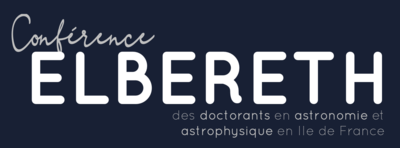Orateur
Description
Mars’ surface is currently one of the environments in the solar system, where the research about prebiotic chemistry is the more active, because of the possibility of a past biologic activity considering Mars gathered the conditions required for the emergence of life at the time it arose on Earth [1].
In this context, a gas chromatograph mass spectrometers (GCMS) instrument was sent to Mars in the Sample Analysis at Mars (SAM) experiment onboard the Curiosity rover. The role of this instrument is to detect and identify organic and inorganic molecules in Gale crater [2]. Currently, the rover is passing through a sulphate rich geological unit, containing a high concentration in magnesium sulphate which is likely to withhold organic molecules. A part of my PhD thesis focusses on the interaction between sulphate and organic molecules, and the ability to detect it with GCMS.
A second GCMS is part of the ESA ExoMars rover payload with the Mars Organic Molecule Analyser (MOMA) instrument. The Rosalind Franklin rover should land in 2030 in Oxia Planum, an ancient delta above Valles Marineris. This landing spot is characterized by a certain amount of clay. Clay formation need water exposure for a long time, thus if complex organic molecules happened to have existed in the water flowing through the delta, they might have been trapped the layers of clays.
To analyse in situ samples, MOMA (and SAM) uses several sample preparation technics. Pyrolysis heats the sample up to 850°C and allows organic molecules to evaporate or to be fragmented into volatile species prior their injection into the GCMS. Chemical reactants are also used to help making molecules of prebiotic interest analysable by GCMS, such as amino or carboxylic acids. Some reactants are used at a relatively low temperature for analysing relatively small molecules, this is the derivatization process, whereas others are used at high temperature for the analysis of large organic molecules, this is the thermochemolysis process [3].
To prepare the interpretation of the future data to be collected by the different instruments onboard the Exomars rover, the project scientist organized an intercomparison campaign of the analysis of a variety of samples relevant to Oxia Planum. With this aim, Mars analogue samples were sent to the laboratories participating to the Exomars project, including LATMOS to perform their analysis in MOMA analytical conditions. My work in this study is the characterization of the molecular composition of the analogue samples under laboratory conditions mimicking the MOMA conditions. This characterization will serve two objectives: 1) To be a reference point for the team mimicking MOMA; 2) To understand which organic molecules may be preserved in Mars analogue samples and under which conditions.
[1] Cockell, C. S., Bush, T., Bryce, C., Direito, S., Fox-Powell, M., Harrison, J. P., ... & Zorzano, M. P. (2016). Habitability: a review. Astrobiology, 16(1), 89-117.
[2] Mahaffy, P. R., Webster, C. R., Cabane, M., Conrad, P. G., Coll, P., Atreya, S. K., ... & Mumm, E. (2012). The sample analysis at Mars investigation and instrument suite. Space Science Reviews, 170, 401-478.
[3] Goesmann, F., Brinckerhoff, W. B., Raulin, F., Goetz, W., Danell, R. M., Getty, S. A., ... & van Amerom, F. H. (2017). The Mars Organic Molecule Analyzer (MOMA) instrument: characterization of organic material in martian sediments. Astrobiology, 17(6-7), 655-685.
| Astrophysics Field | Planetary science |
|---|

